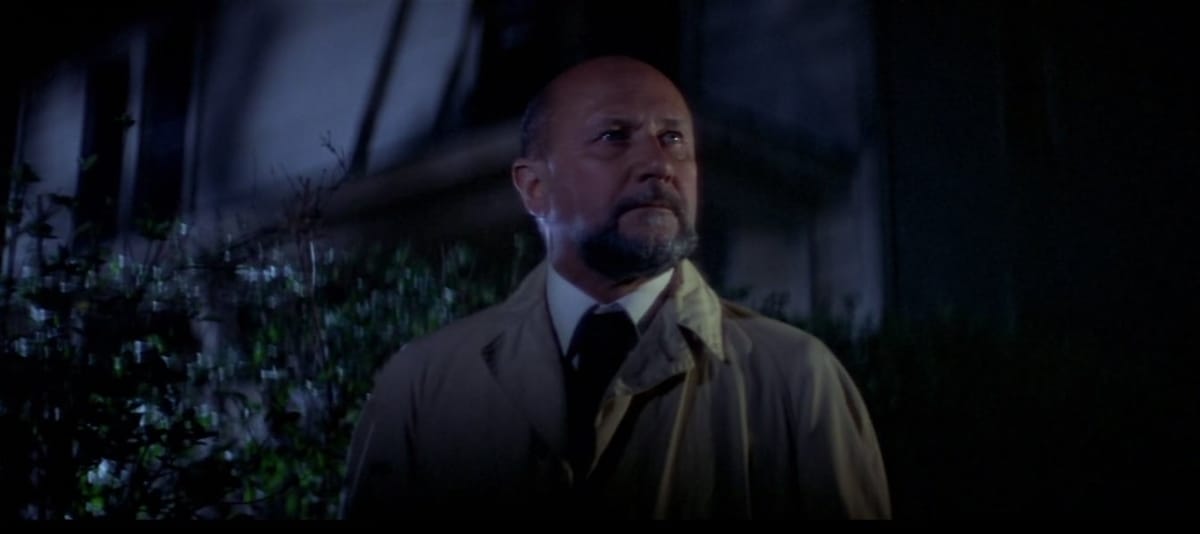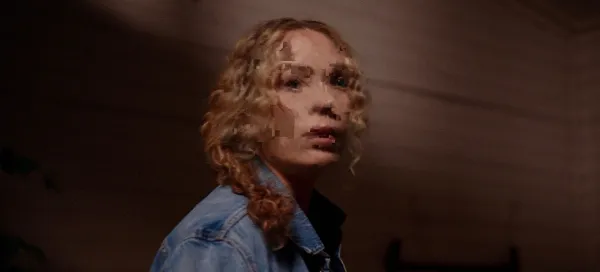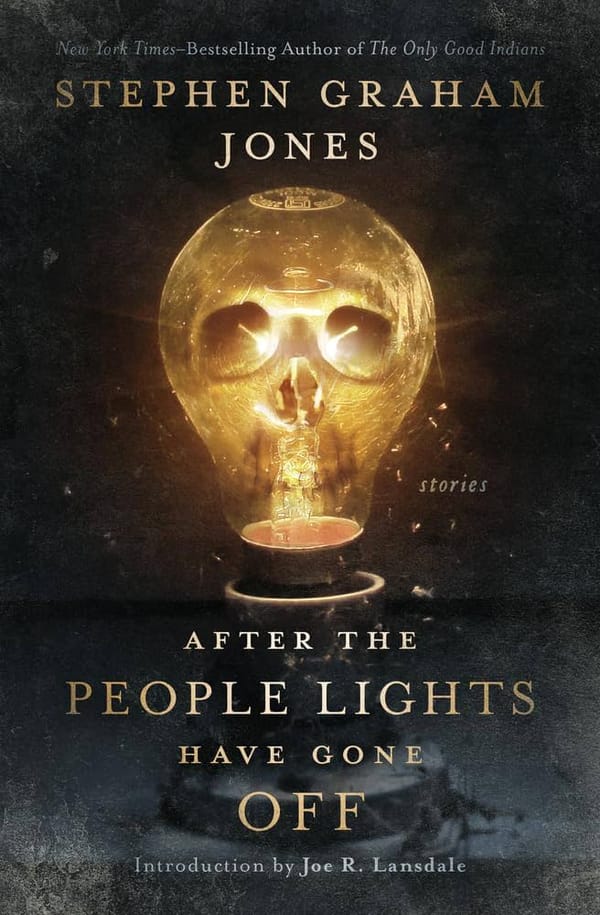Tracing The Shape 19: Just Down The Street

It's time for everything to come together. We know where all the pieces are on the board, and the endgame is afoot, but Sam Loomis is still standing in the bushes by the Myers House, frozen half in jittery determination and half in fear that the unthinkable has already happened somewhere.
We don't ever have an explicit timeline for everything that happens in this film, but we know that Laurie's now put the kids to bed, and that Loomis stopped in at the Myers House just as it was getting dark. He has, conservatively, been standing there for at least a couple of hours, never sitting down, never going back inside. He's chosen his post and he's manning it, which is when Carpenter chooses to spring one of the great horrors of this story on all of us.
Michael was right there the whole time.
While Laurie's checking on Tommy and Lindsey at the Doyle House, Loomis, antsy and frustrated, finally looks far enough to his left to spot a familiar car. It's the station wagon Michael stole from Smith's Grove, and it's been parked on the street since nightfall, maybe a couple hundred feet away, close enough that Loomis can jog down the street and stand right in front of it.
The last time we visited Loomis at the Myers House, we saw once again just how single-minded he is, how convinced that he knows how Michael thinks and what Michael wants. He lets Sheriff Brackett ride off into the night while he stays put because he thinks that is the reasonable, logical thing to do. But Michael Myers does not operate in the realm of reason, or at least not the kind of reason Loomis is used to. Outside the walls of Smith's Grove, Michael is building his own new world, and all of Loomis's alarmism isn't enough to overcome that. He missed something crucial, and that something was Laurie Strode, who dared approach the threshold of the Myers House and thus tempt Michael to come out into the night again.
And now here's Michael's car, just down the street, where it's been for hours. Where Loomis could have easily seen it if he'd just held his gaze on that side of the street for a few seconds longer.
In the moment, as far as Loomis is concerned, it's an opportunity. He's got a clue! He has no idea how long the car's been parked there, or where Michael is, but there's now a new direction for his search, a renewed energy to it. He trots off into the night to find his man, not knowing that if he stood in that spot just a few moments longer, he'd run into Laurie Strode, and they could perhaps face what's next together. Instead, for the moment, they will remain alone, stepping into the dark unknown separately as Michael waits and watches. The placement of the scene, and Loomis's proximity to the Wallace House where Michael waits, is enough to make you wonder if Michael's looking out from the window just then. If he's capable of smiling, perhaps he'd smile at this, at Loomis being so close, yet so far.
If you were the type to nitpick Halloween, you might consider this moment a bit of a flaw in the geography of Haddonfield. It feels slightly farfetched that this guy, who's devoted the last 24 hours of his life solely to finding Michael Myers, would miss such an obvious detail. The car is right there. But I don't think this is a flaw in the film's understanding of its world and its characters. I think this is a depiction of hubris, of arrogance, on the part of Loomis and even Brackett. Think of all the times a mass shooting happened and then we got a wave of stories about the warning signs that were there, in plain sight, for all to see. Think about stories of cops kicking down the wrong door, shooting the wrong person, just flat-out dropping the ball because they were convinced their path forward was the only path forward.
Now look back at Loomis, the haunted man, the doomed man, so swept up in his own notions about a "purely and simply evil" entity in a man's body that he can't imagine Michael might outthink him. He spent the first half of the movie lambasting everyone else for refusing to take Michael as seriously as he does, and now he's the one who failed to see what was right in front of him. His own words about Michael – "Don't underestimate him" – have come back to haunt him.
Because the great tragedy of this scene, whether you're viewing it as Loomis just missing Laurie or Loomis missing that the car was there the whole time, is that everyone who is going to die in this film is already dead. Annie, Lynda, and Bob are gone, their bodies stacked like cord wood in the Wallace House. Could Loomis have saved them if he'd noticed sooner? Could he actually have noticed sooner? Or is this the dark spell of The Boogeyman rendering the obvious into the obscure? Reason, logic, and simple mindfulness are breaking down in Haddonfield, and try though he might, Sam Loomis can't stop it.
Next Time: Laurie's long walk.



